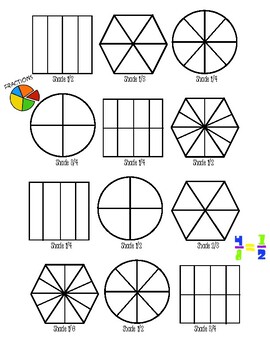

In developing a sound understanding of the part-whole concept of fractions, it is necessary for teachers to present situations of fair sharing, where the child is expected to reason out the consequences of different actions. Thus the aim is to engage in working in situations that offer opportunities to explore fractions in each of these situations.

Grace describes some of these situations in terms of properties of being discrete or continuous, definite or This will aid them in developing a more robust grasp of the concept of a fraction. In other words, children must see a whole in all its representational forms.

In experiencing a variety of situations where fractions canīe found, learners will have the opportunity to reflect and abstract critical relations in different contextual situations. Although there is some need for this sort of activity, children should be exposed to a wide variety of situations, some where such folding or splitting strategies will not be successful. When teaching fractions in schools, the emphasis is often on situations where the object can easily be cut, folded, split or coloured in equal parts. What impact might this have on how we teach children to understand fractions better? Ideas for teaching fractions The previous example, a child indicating that the uncoloured fraction of the square is three-quarters, is simplifying the denominator and numerator to give an equivalent fraction, without losing the value of the fraction, though some information is lost. This is based on a ratio concept and Grace argues it also indicates a deeper understanding of fractions. The older, more mathematically-mature child can partition the region into $x$ number of parts and then designate $y$ of the parts to indicate $\frac$ learners begin to see the fraction as a comparison between the numerator and the denominator (what Grace calls one-to-many or many-to-many comparison). It would be necessary for portions to be equal in size for counting to offer a way forward.Įven young children can partition regions or composite units approximately equally among two or three recipients. Here a teacher would be trying toĮmphasise that we cannot always successfully describe quantity by counting. In this latter case the answer would be "A quarter of the chocolate". The complexity here is also whether the 'whole' refers to the individual bars, in which case each child gets three-quarters of the bar, or the 'whole' refers to the three bars. These children are aware of the fragments as only individual unit items. No conceptual distinction is being made between the 'two' as in number of pieces and the 'two' pieces as fractions of each unit, or the So, when asked to determine what share each child will receive if three chocolate bars are shared equally among four children, some $7$ year-olds would respond that a child receives two. In fragmenting the child treats the parts as individual unit items.


 0 kommentar(er)
0 kommentar(er)
